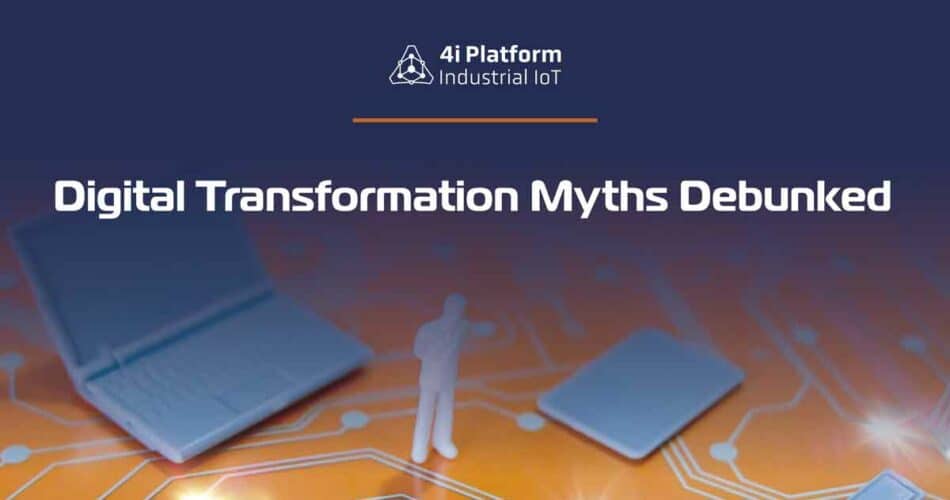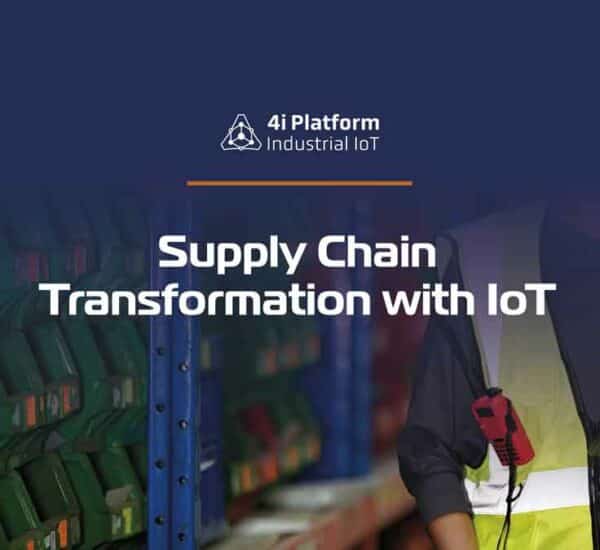There is no doubt that technology evolves at a fast pace: new devices and systems constantly vie for consumers’ attention. And many of these new technologies offer endless opportunities for businesses to grow. Industry 4.0, for example, offers manufacturing companies the possibility to collect and analyze data from their production lines and to automate processes. The way it works is through connected devices, machinery, and production systems. The end result is a smart factory with enhanced, sustainable production. However, some companies hesitate to implement this system. Why? Because some myths about the Industrial Internet of Things (IIoT) and the digital transformation are still floating around.
Considering that the global spending on digital transformation technologies and services forecast for the 2017-2026 period is 3.4 trillion U.S. dollars, it is clear that not every stakeholder buys into these myths.
We will explain six of the most common ones.
Digital Transformation Myth #1: Implementing IIoT in Relay Logic Control Equipment Requires Machine Downtime
The idea of interfacing legacy equipment with state-of-the-art technology may seem daunting, but it is not what it seems. Nowadays, plug-and-play connectivity makes it easier to implement IIoT in established factories with relay logic control equipment.
Digital Transformation Myth #2: IIoT Is a Threat for Employment
In a dystopian future, robots will replace humans in every field. But that is not likely to happen. In the here and now, human workers are very much needed and an integral part of any business. Although it is true that certain manual tasks will eventually be automated, workers will be free to focus on higher-value tasks.
Plant managers will have to focus on reskilling their workforce, as existing jobs, like that of machine operators, will evolve as technology evolves. Also, smart businesses will demand data scientists and security engineers, so there will still be jobs for humans during and after the digital transformation of a company.

Digital Transformation Myth #3: A Dashboard Is All There Is to IIoT
Wrong. Although the most visible -tangible if you will- part of IIoT, a dashboard is a tool to organize and visualize data. IIoT drives the digital transformation. It helps businesses collect and analyze data that they can use to make the right kind of decision: data-driven decisions.
IIoT generates insights into machine performance and can predict problems that can be solved before they even happen. So, engineers can devise a maintenance plan that meets the needs of their production lines without the need to stop them, thus enhancing production.
Digital Transformation Myth #4: IIoT Is for Large Factories Only
Actually no, it isn’t. Organizations of any size can implement an IIoT system. There are IIoT solutions for small and medium-sized companies that do not require a dedicated IT team or new infrastructure.
Digital Transformation Myth #5: The Risk of Cyberattacks Is High
The main security threat to IIoT are the hackers. These are criminals who exploit the system’s vulnerabilities to steal data and use it with malicious intent. That sounds ominous. However, putting a security strategy in place can thwart cyberattacks. There are strict security protocols, internal traffic is encrypted, and data is disaggregated, so hackers cannot make sense of it.
In order to secure assets, security engineers must ensure that new devices are secured by design, as well as their ongoing monitoring and protection. When they deploy an IIoT system, they need to know who will have access to it, what security solutions come embedded, and whether data flows go through existing networks.
Digital Transformation Myth #6: It Is All About Technology
A popular misconception is that the driver of the digital transformation is pure technology. For a business to succeed, strategy and marketing as well as technology in equal share, must drive the transformation. That is, the business model has to change as well.
There needs to be a transformation of the organizational culture as well, of the people, the processes, and teams. Since human resources have to adopt this technology, change management is critical in the transformation process.
4i Platform helps small and medium-sized manufacturers bridge the technological gap and start on their digital transformation journey towards a smart factory.





